We may earn commissions when you buy from links on our site. Why you can trust us.
Pebblebee Card: The Best Wallet Tracker for iPhone Owners
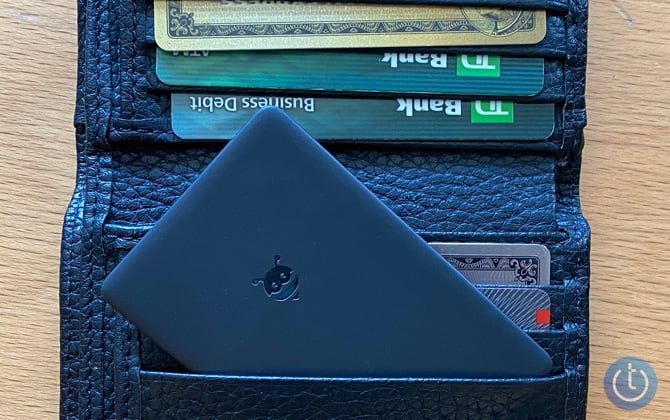
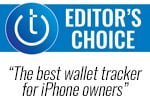 There are many wallet trackers you can use with your iPhone. However, the Pebblebee Card stands out from its competitors, like the Apple AirTag and the Chipolo CARD Spot, for its unique combination of a rechargeable battery, slim credit-card-size design, and access to Apple's massive Find My item-tracking network.
There are many wallet trackers you can use with your iPhone. However, the Pebblebee Card stands out from its competitors, like the Apple AirTag and the Chipolo CARD Spot, for its unique combination of a rechargeable battery, slim credit-card-size design, and access to Apple's massive Find My item-tracking network.
There are two key considerations you should look for when deciding on which wallet tracker to go with. The first, and most important, is access to Apple's Find My. That's because the location of items that use Find My can be found by millions of internet-connected iPhones, iPads, and Macs around the world. The other important factor is the design; a wallet tracker should fit easily in your wallet without creating a huge bulge.
The obvious main competitors to the Pebblebee are the Apple AirTag and the Tile Slim ($34.99), along with the lesser-known Chipolo CARD Spot. The Tile Slim doesn't use the Find My network, which is a big drawback in this lineup. While the Apple AirTag's bulky design is not as well-suited for wallets. The Pebblebee Card and Chipolo CARD Spot ($35.00) are the only two trackers that combine both these features.
After purchasing and using the Pebblebee and Chipolo for several weeks, I found they have almost identical functionality when used on the Find My network. However, there's one big difference – the Chipolo CARD Spot has to be entirely replaced when the battery dies (approximately two years), whereas the Pebblebee Card has a rechargeable battery that can be recharged at any time with its included magnetic charging cable (though it is a proprietary design, so don't lose it).
It's this unique combination of a rechargeable battery, slim wallet-friendly design, and the use of the Find My Network that make the Pebblebee Card my choice as the best wallet tracker for iPhone owners.
Design
The Pebblebee Card is designed to be small and light enough that you won't feel that it's there after you slip it into a credit card slot in your wallet. Measuring 2.12 by 3.35 by 0.11 inches, it's about the thickness of two credit cards stacked together and just a hair thicker than the Chipolo CARD spot, which is 0.09 inches thick.
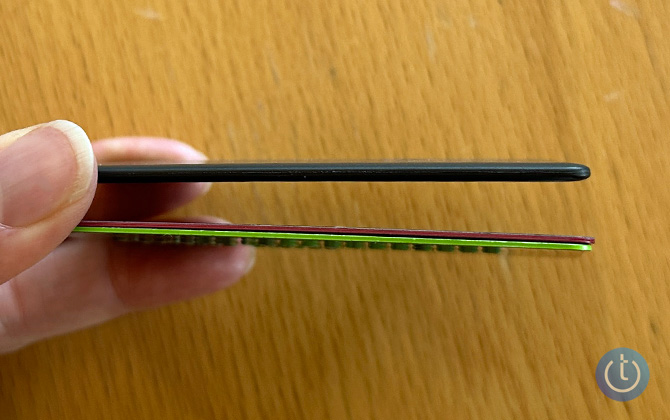
You'll find a bee icon on the front of the Pebblebee Card, which doubles as a button for pairing and checking the remaining battery. When you press and hold the button, a row of five LEDs shows how much battery is left. On the back, you'll see two tiny holes for the speaker and two slightly larger holes for the magnetic charger.
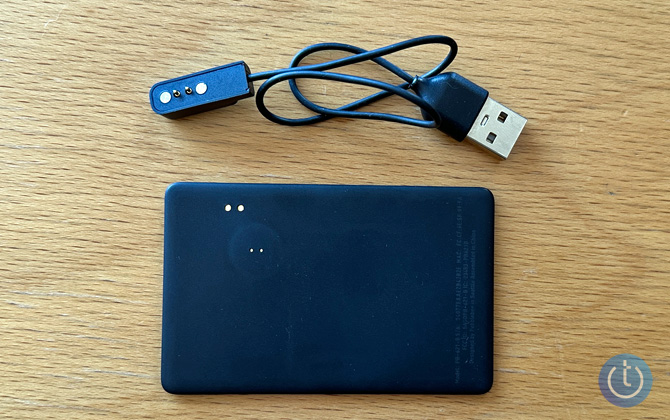
The plastic Card has an IPX6 rating, making it splash-resistant but unable to withstand immersion. It feels the same as the Chipolo CARD Spot – not particularly rugged. If you keep your wallet in your back pocket and sit on it all the time, I don't think it would hold up well over time (the Chipolo CARD Spot that I tested accidentally went through the wash and emerged cracked). However, I keep the Pebblebee Card in my wallet, which I carry in my purse, and the Card is in pristine condition.
Set up
There are two ways to set up the Pebblebee Card – with the Apple Find My app or the Pebblebee app (free for iOS and Android) – but Apple Find My is the clear winner if you want to find your wallet away from home. Compared to the Find My network, the Pebblebee network is nonexistent, so it doesn't make sense to use the Pebblebee app from a tracking perspective. In fact, I never located the Card when it was away from my iPhone because there weren't enough Pebblebee app users to provide location data – and I live in New York City.
The Pebblebee app does have valuable features, though, that the Find My app doesn't offer. You can share the location of your Card with anyone who downloads the Pebblebee app. Voice Tag lets you use Alexa or Google Assistant to find your Card. You can set up a virtual fence, so you're notified anytime your Card enters or leaves a specific area. And you can turn on the ability for the Card to ring your phone. However, if you use the Pebblebee app for setup, you have to use the Pebblebee network to find your Card when it's not near your phone and you won't be able to use the Find My app for tracking.
I also found these Pebblebee app features to be pretty kludgy. It was hit or miss whether the Card would ring my iPhone or I would receive an alert if my wallet went outside the virtual fence I set up. And after I did a factory reset of the Pebblebee Card, I couldn't get the Card to work again with Alexa and Google Assistant.
Setting up the Card with the Find My app is easy. You open the app, tap the plus mark, and select "Add Other Item." It took just a few seconds to find the Card. You can then name the device and choose an emoji to represent your Card on the Find My app map. That's it.
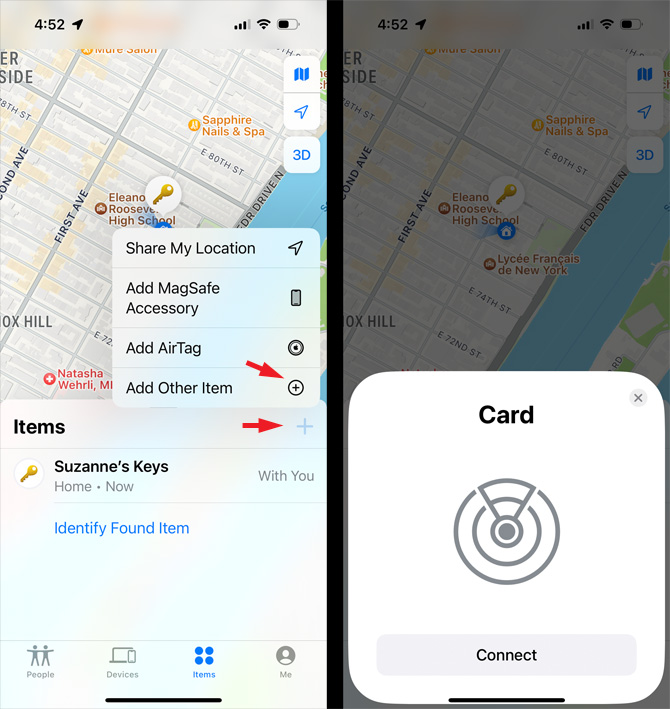
If you decide to use the Pebblebee app (which you probably shouldn't), the setup is essentially the same as using Find My. You need to set up a Pebblebee account, but it's just your email address that you verify with a passcode – no password necessary. You open the app, tap the plus mark, and the app finds the Card right away. Once you're paired and you name your Card, the tracker is ready to use.
Using the Pebblebee Card with the Find My app
If you set up the Pebblebee Card with the Find My app you'll enjoy most of the same features of an AirTag (but not the Precision Finding feature) and all of the same functions as the Chipolo CARD Spot. You'll find your Card on the Items map in the Find My app. Tapping on the icon for your Card will open a menu of actions.
You can tap "Play Sound" to trigger the Card to make a noise, which is plenty loud even when it's in your wallet at the bottom of a bag. And it's louder than the Chipolo CARD Spot and AirTag. Unfortunately, the Card (like the Chipolo CARD Spot) doesn't have an ultra-wideband radio, so it doesn't support Precision Finding, which supplies direction and distance information.
The "Left behind" alerts that occur when your Card is out of range of your iPhone work perfectly. Just keep in mind that it will take a few minutes for the notification to go through. For example, when I was staying at my aunt's house in Maine, the alert would trigger when I drove about a half mile from her house – every time. If you leave your wallet behind to exercise or walk the dog, you can set up exceptions for the left-behind notifications.
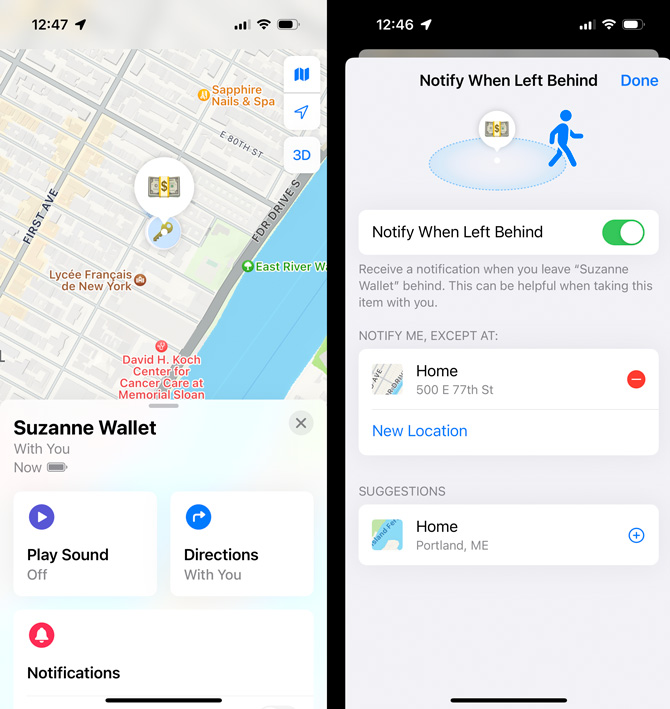
Privacy concerns
The Pebblebee Card has the same anti-tracking technology as the Apple AirTag when you set it up with the Find My app. If someone places a Card in your bag, it will let you know via your Find My app if it travels with you for a while. And if you're an Android user, you can download Apple's Tracker Detect app (free on Google Play) to scan for trackers, though the app won't check automatically for you.
The bottom line
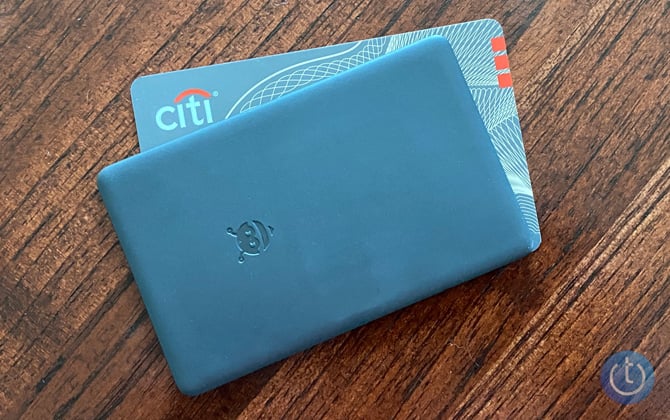
For iPhone owners, the best wallet tracker is the Pebblebee Card. It's slim enough to fit in your wallet comfortably and it uses Apple's massive Find My network, the best tracking network for locating your wallet when you leave it somewhere. And it has a rechargeable battery with a battery indicator, so you don't have to purchase a new product every couple of years. While it doesn't have an ultra-wideband radio, like the AirTag, for nearby finding, the speaker is loud enough in most cases to overcome the deficit, and the slim design is well worth the tradeoff.
Price: $29.99
[Image credit: Suzanne Kantra/Techlicious]
For the past 20+ years, Techlicious founder Suzanne Kantra has been exploring and writing about the world’s most exciting and important science and technology issues. Prior to Techlicious, Suzanne was the Technology Editor for Martha Stewart Living Omnimedia and the Senior Technology Editor for Popular Science. Suzanne has been featured on CNN, CBS, and NBC.

















